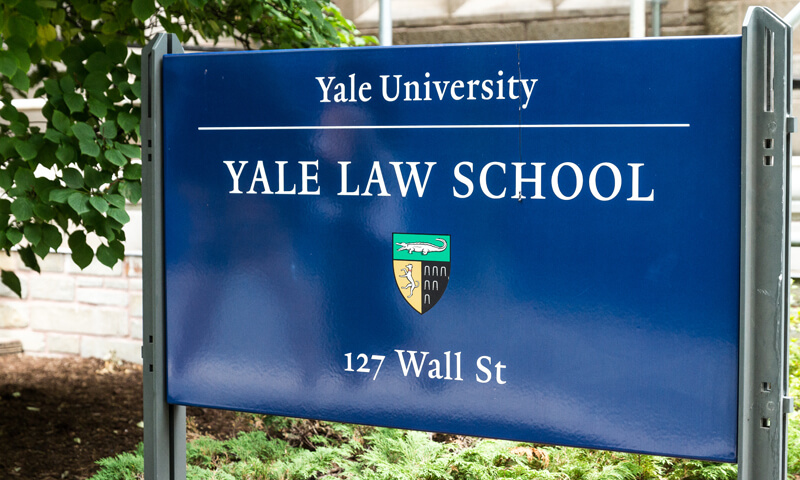Summary: Although enrollment is down nationwide, law school enrollment has increased, especially at top-tier schools.
Although the demand for a law degree is diminishing, tuition continues to rise at law schools nationwide. Tuition has especially risen at prestigious schools whose graduates land jobs at some of the country’s biggest law firms. According to Newsweek, tuition has risen in excess of inflation for the past forty years.
Last year, Columbia’s annual tuition was $60,274, with Cornell Law trailing closely behind. There are ten law schools in the United States that charge over $55,000 per year. Five years ago, Columbia, Yale, and Cornell passed this threshold for the first time.
Philadelphia law schools have the lowest tuition in the country.
In all American Bar Association-accredited law schools, average tuition has increased from $32,227 (2011) to $35,312 (2014), marking close to a 10 percent increase. However, in higher-ranked schools, the tuition rates rose even more. Ten schools that sent the highest percentage of the class of 2014 to the largest 250 firms in the United States (these schools are called “Go-To Schools”) increased their tuition, on average, by 13 percent from 2011 to 2014. In 2011, the average tuition was $49,907; in 2014, it was $56,292.
According to the administration at Columbia, the increase is worth it. Elizabeth Schmaltz, the executive director of communications and public affairs, said, “We believe that a Columbia Law School education is an excellent investment in a bright future.”
Northwestern University also ranks in the Top 10 according to large-firm hiring and tuition. It, however, has made efforts to limit tuition increases, and had the lowest percentage increase among the top law schools. Currently, its tuition is $56,434, up just 9 percent from 2011.
It’s not uncommon for law schools to raise their tuition each year. The increases in tuition while enrollment remains at an all-time low demonstrate two points. One is that the recorded tuition and what a student actually pays the school are likely two different numbers, due to scholarships and other discounts. Second, when students know that their schools will send them to high-paying jobs at big firms, they are willing to pay the big bucks.
The University of Toledo College of Law has decreased its tuition for in-state students.
Jerome Organ, a professor at the University of St. Thomas School of Law, said, “These are schools where the economic return on investment makes the most sense. Clearly, there are people who are paying a lot for what they perceive as value.” Organ studies law school expenses and other legal trends. In one survey, he found that many applicants would prefer to pay more to a top-ranked school than less to attend a lower-ranked school. Columbia has not suffered from its increased tuition: last year, it had five applicants for every spot in its incoming classes it offered.
Bernard Burk, a University of North Carolina School of Law professor who studies postgraduate employment, said, “There will always be a superelite sector of the academy that can charge more or less what they want, with the understanding that they will have to discount to get the students they really want.”
Kyle McEntee, the executive director of Law School Transparency, which provides cost and employment data to hopeful law students, disagrees with the increases. He said, “It’s ridiculous. I don’t care what the employment outcomes are. This philosophy is wrong, and it has been for a long time. Pricing has followed a willingness-to-pay model, and I think that’s unconscionable in higher education.”
Most Columbia graduates will repay their student loans in 10 years, according to Brian Tamanaha, a law professor at Washington University in St. Louis School of Law who authored “Failing Law Schools.” Roughly two-thirds of alumni take high-paying firm jobs, and others continue in public service careers.
Some applicants have leveraged their scholarship offers. Higher tuition price tags allows the schools to come down more on their expenses.
Cornell’s tuition increased by close to 12 percent from 2011 to 2014. However, net tuition did not change much because of additional scholarship money. Dean Eduardo Peñalver said, “Because of the significant scholarships we grant, the overall cost for many of our students is well below our published tuition. In recent years we have increased our scholarship aid at a much faster rate that we have increased tuition.”
At Columbia University, over 43 percent of the school’s law students received financial grants that averaged $15,000. In addition, the law school subsidizes housing to provide affordable living in New York.
The University of Pennsylvania has increased its grants and scholarships by an impressive 40 percent over the last four years. Classes were kept small, and tuition guarantees were provided for students who worked in public interest jobs during the summer.
However, overall, financial aid has not totally offset the growth in law school tuition. Organ said that, at all but two of the schools, over half of the student body pays the full tuition. “Is most of the 13 percent increase [in list tuition among the top 10 Go-To Law Schools] accounted for in increased scholarships? I would say no, it’s not. Some of it is, but not dollar-for-dollar.”
Lowering tuition may lead to increased enrollment in law schools.
Tamanaha was not sure if law school tuition would ever become too high, but he predicts that three years of tuition and living expenses at the most expensive schools would cost around $300,000 within five years. He said, “Legal educators like to assert that the long-term return on a law degree is worth the high cost, but even they must admit that many law graduates do not reap the full earnings premium, and as the price rises more and more will suffer negative returns. Law schools must begin planning for a future in which annual increases in tuition are not automatic.”
Source: National Law Journal
Photo credit: scusoma.edu













































